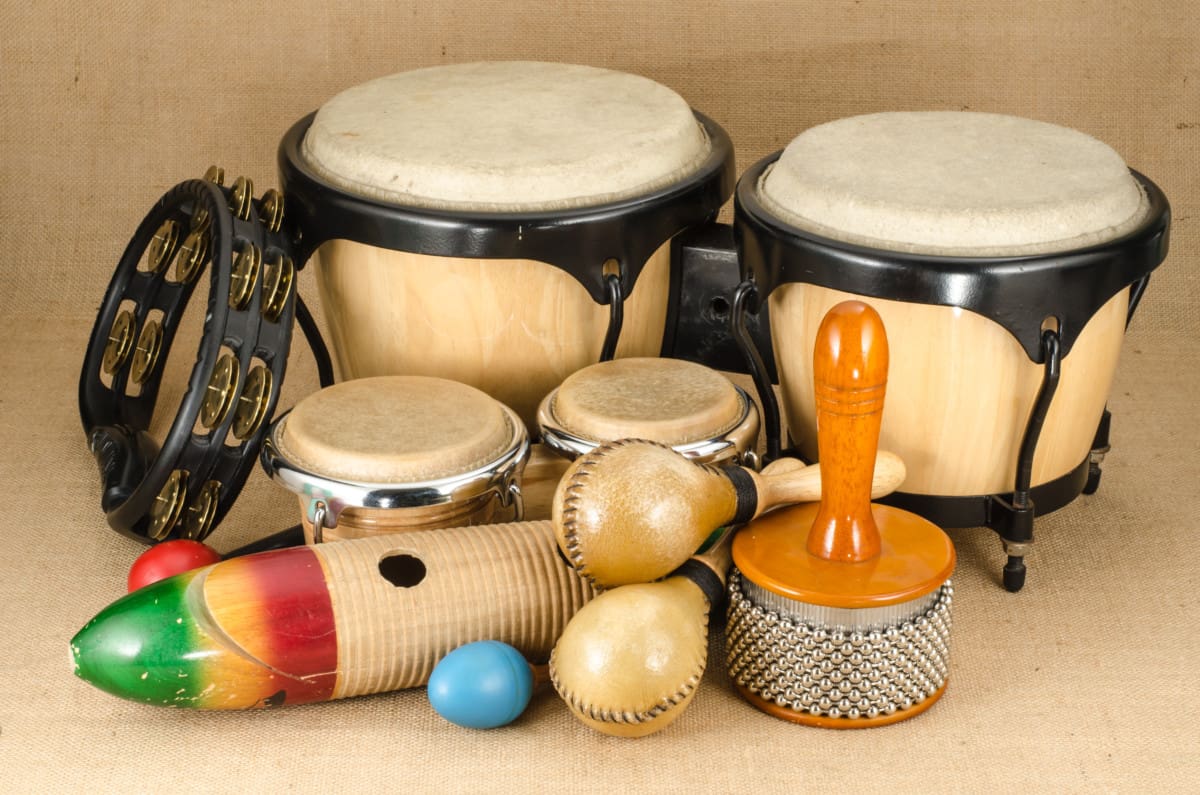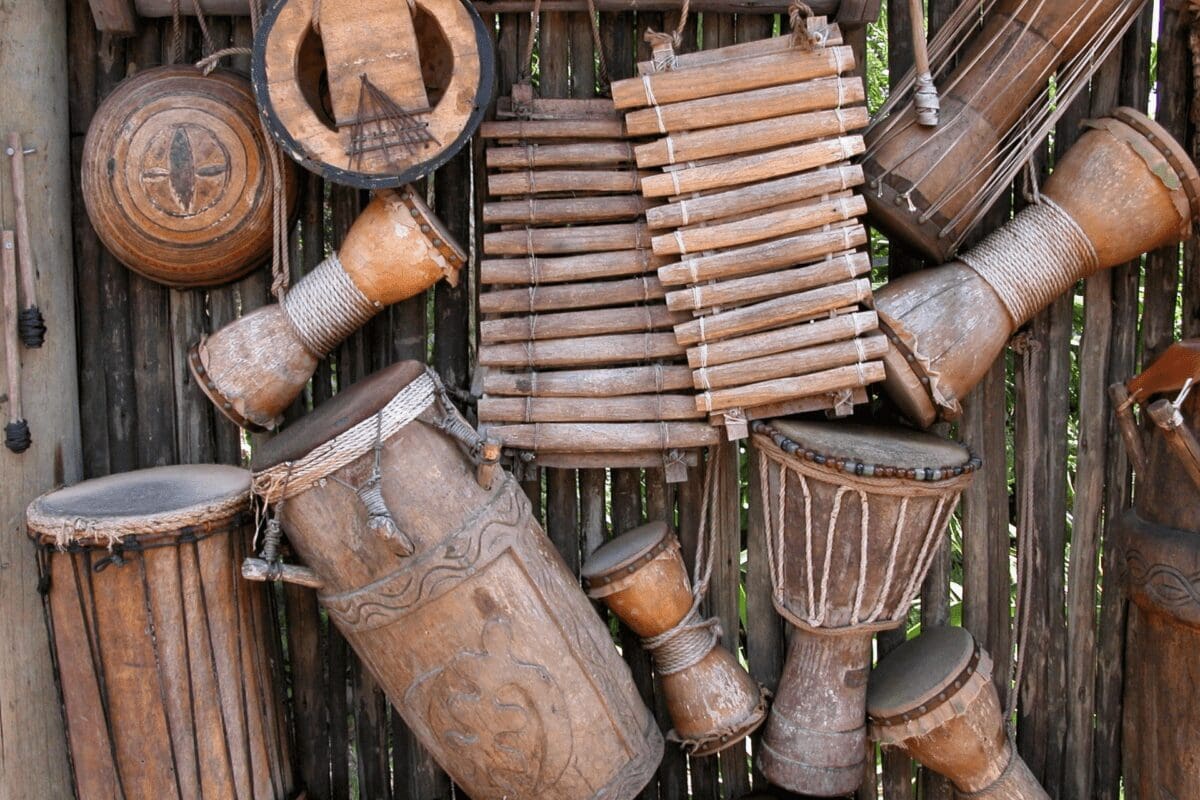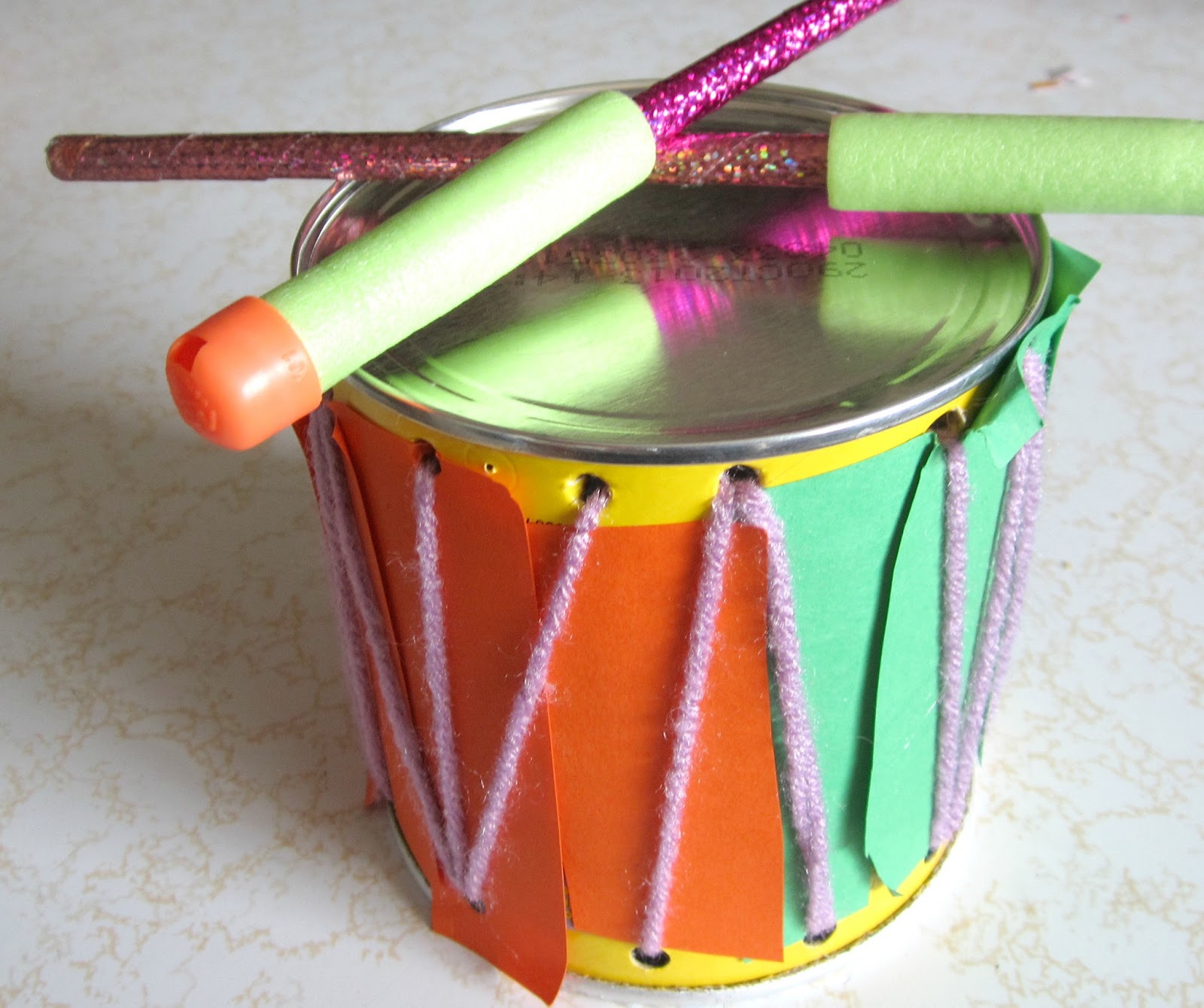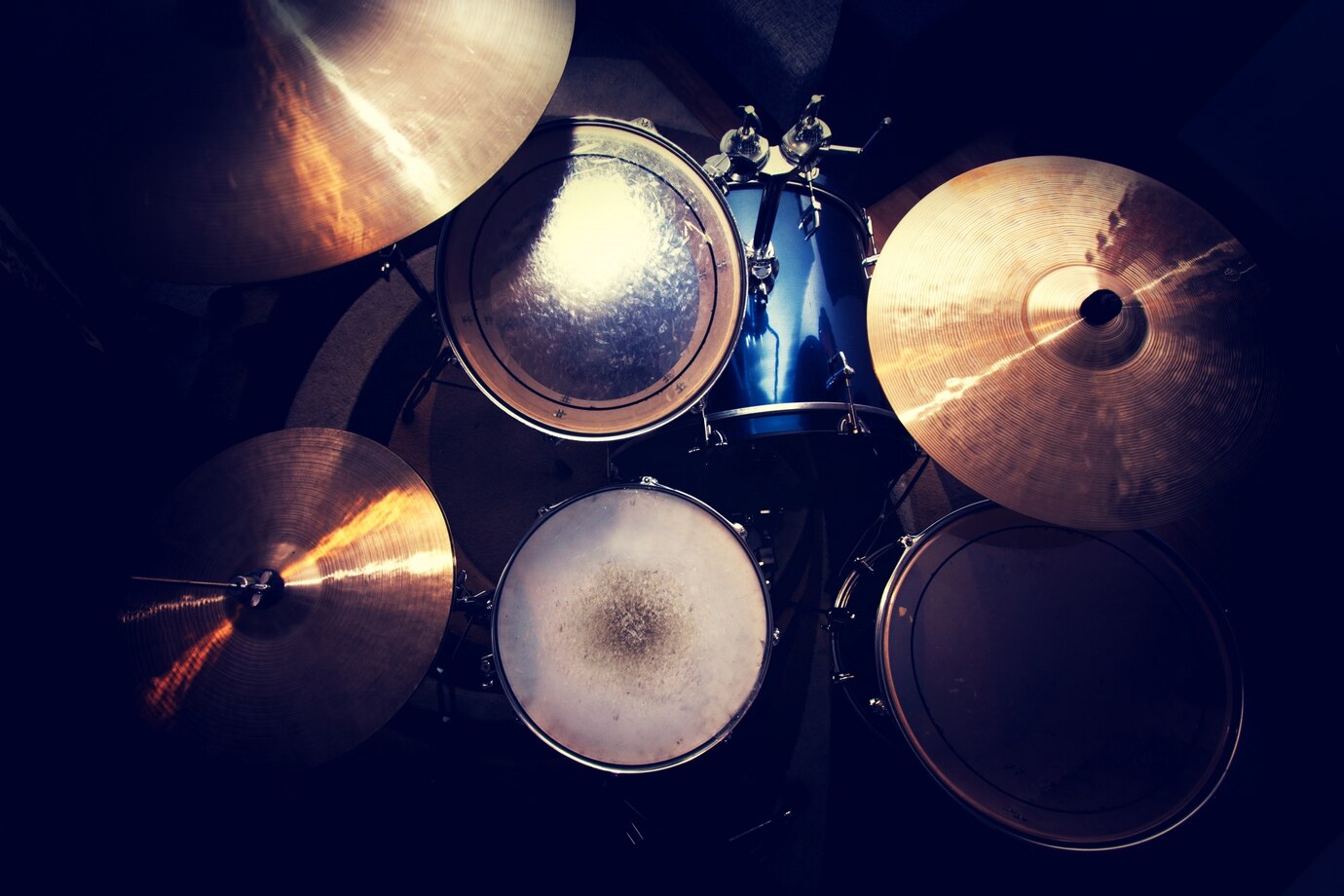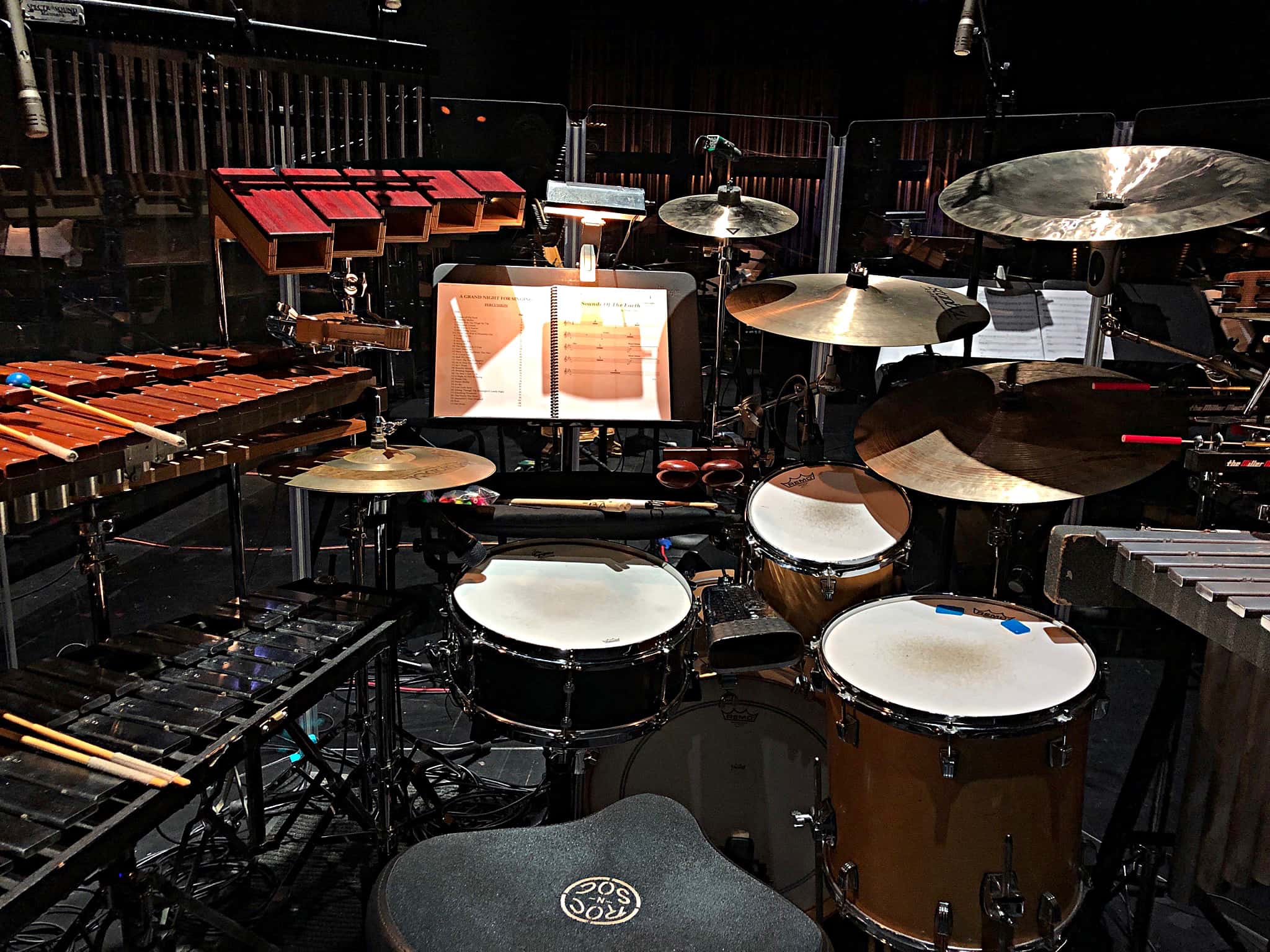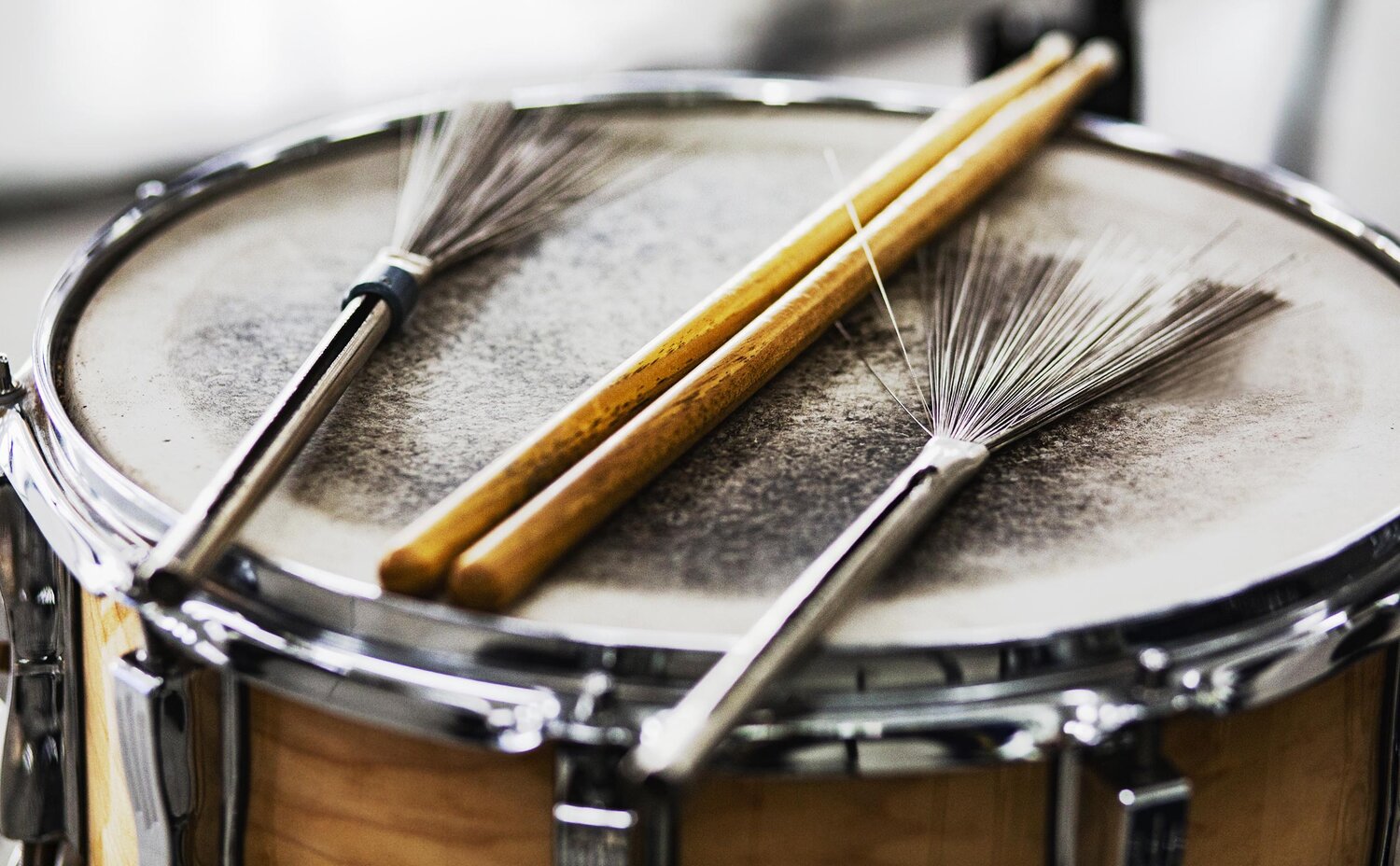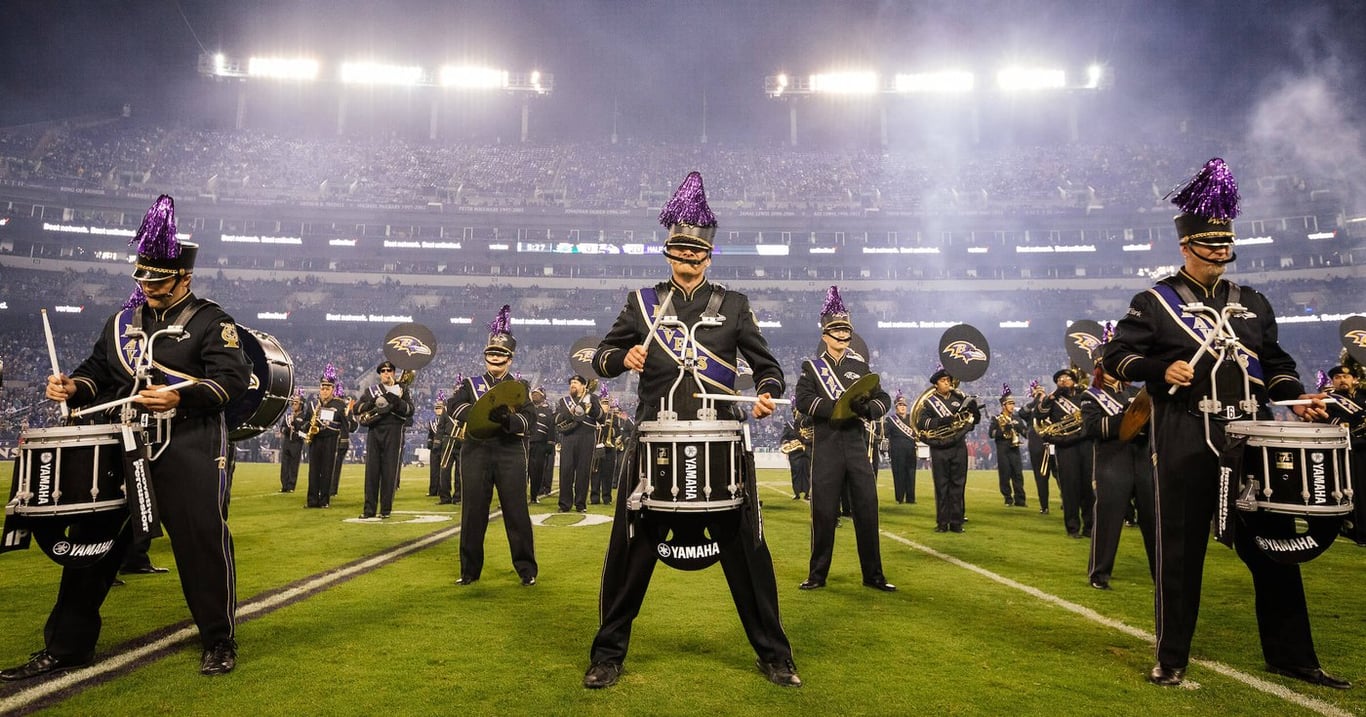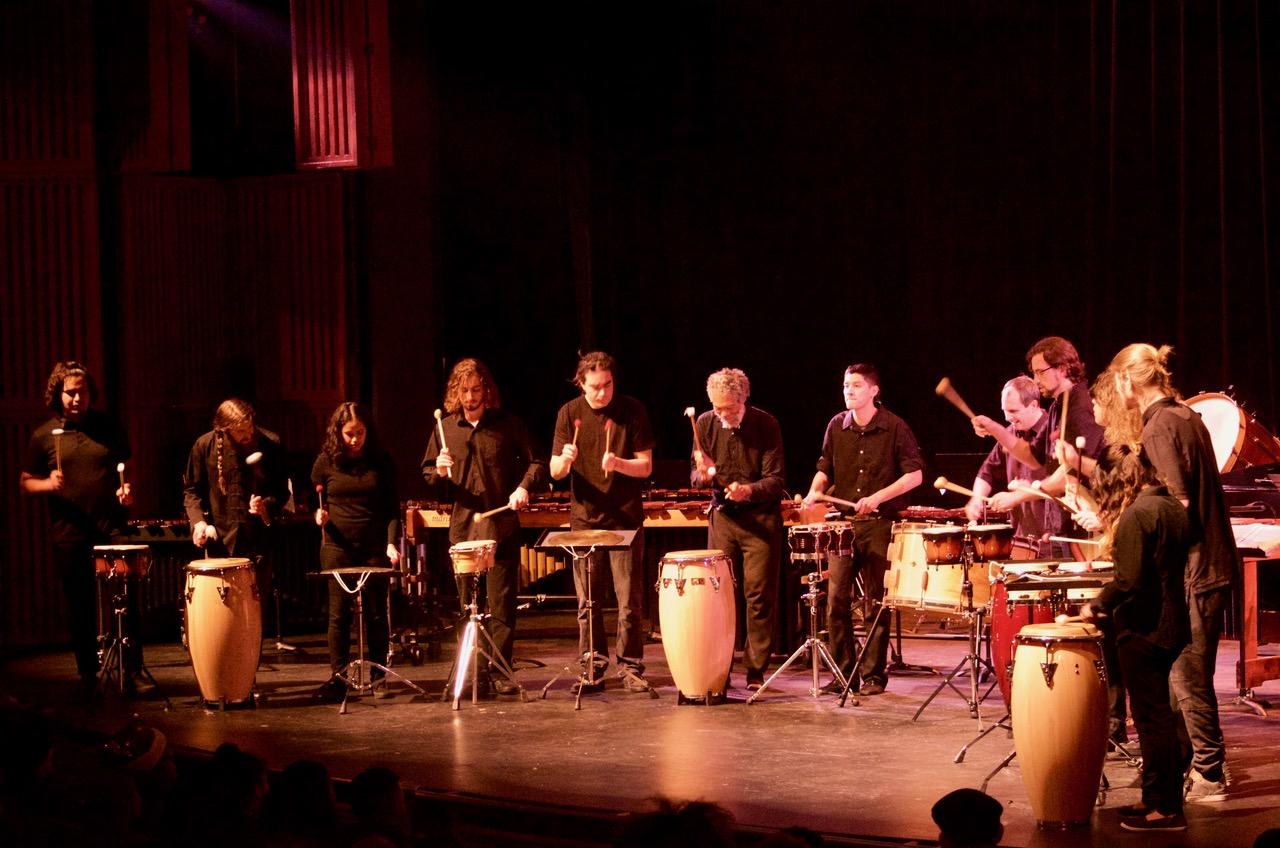Home>Instruments>Percussion Instruments>How Do Percussion Instruments Produce Sound


Percussion Instruments
How Do Percussion Instruments Produce Sound
Modified: January 22, 2024
Learn how percussion instruments produce sound and the fascinating mechanisms behind their unique tones. Explore the world of percussion instruments in this informative guide.
(Many of the links in this article redirect to a specific reviewed product. Your purchase of these products through affiliate links helps to generate commission for AudioLover.com, at no extra cost. Learn more)
Table of Contents
Introduction
Percussion instruments have been a fundamental part of music across cultures and centuries. From the thunderous beats of the drum set to the delicate chimes of a xylophone, percussion instruments add rhythm, texture, and energy to a musical composition. But have you ever wondered how these instruments produce sound?
In this article, we will explore the fascinating world of percussion instruments and delve into the mechanisms behind their sound production. Whether you are a musician, a music lover, or simply curious about the inner workings of these instruments, join us on this sonic journey.
There are various types of percussion instruments, each with its own distinct sound and playing technique. From the resonating drums and cymbals to the tinkling of bells and the vibrating keys of a marimba, percussion instruments offer a wide range of tonal possibilities.
Understanding how these instruments produce sound will not only enhance your appreciation for their musicality but also provide valuable insights into the art of crafting and playing them. So, let’s dive into the world of vibrations and sound production to unravel the mystery behind the captivating sounds of percussion instruments.
Vibrations and Sound Production
At the heart of percussion instruments’ sound production lies the concept of vibrations. When a percussion instrument is played, it creates vibrations that travel through the instrument and eventually reach our ears as sound.
These vibrations are produced in various ways, depending on the type of percussion instrument. For example, on a drum set, when the drummer strikes a drumhead with a drumstick, the impact creates a disturbance in the drumhead’s surface. This disturbance causes the drumhead to vibrate, producing sound waves that resonate through the air.
Similarly, on a xylophone or marimba, when a player strikes the wooden bars, the force of the impact creates vibrations in the bars. These vibrations then resonate through the resonators, amplifying the sound and giving it its distinct tonal quality.
It is important to note that different factors influence the characteristics of the sound produced by percussion instruments. These include the material and shape of the instrument, the density and tension of the surfaces being struck, and the technique and force applied by the musician.
Furthermore, the size and shape of the instrument also play a role in determining the pitch of the sound produced. Larger percussion instruments tend to produce lower-pitched sounds, while smaller instruments produce higher-pitched sounds. This is due to the relationship between the size of the vibrating surface and the wavelength of the sound waves produced.
Overall, the process of sound production in percussion instruments is a complex interplay of vibrations, resonance, and the skillful execution of the player. Understanding these principles allows musicians to manipulate and control the sound, bringing their artistic expression to life.
Types of Percussion Instruments
Percussion instruments can be categorized into several main types, each with its own unique characteristics and playing techniques. Let’s explore some of the prominent categories of percussion instruments:
- Membranophones: Membranophone percussion instruments produce sound through the vibration of a membrane or drumhead. This category includes instruments such as drums, tambourines, and congas. Drums come in various shapes and sizes, from the snare drum and bass drum to the djembe and tabla. Each drum produces a different tone and is played using different techniques, such as striking the drumhead with hands, sticks, or mallets.
- Idiophones: Idiophones produce sound through the vibration of the instrument itself. The vibrations can be created by striking, shaking, or rubbing the instrument. Examples of idiophones include cymbals, bells, xylophones, and marimbas. These instruments have a distinct pitch and are often arranged in a keyboard-like format for easy playing.
- Aerophones: While most commonly associated with wind instruments, aerophones are also a category of percussion instruments. These instruments produce sound by using the flow of air. Examples of aerophones in the percussion family include the bassoon, whistle, and pipe organ. These instruments add a unique tone and texture to the overall percussion ensemble.
- Electronic Percussion Instruments: With advancements in technology, electronic percussion instruments have become increasingly popular. These instruments use electronic triggers and sensors to produce sound, replicating the sounds of traditional percussion instruments or creating entirely new tones. Electronic drums, drum pads, and electronic marimbas are some examples of these versatile instruments.
Each type of percussion instrument offers a distinct sound and contributes to the overall rhythmic and melodic landscape of a musical arrangement. The combination of these different types of instruments creates a rich and diverse percussive ensemble.
Whether you prefer the thunderous beats of the drums, the shimmering chimes of bells, or the intricate melodies of xylophones, percussion instruments provide endless possibilities for musical expression.
Mechanisms of Sound Production
There are various mechanisms through which percussion instruments produce sound. Understanding these mechanisms can provide valuable insights into the intricacies of sound production in percussion instruments. Let’s examine some of the common mechanisms:
- Striking: The most straightforward mechanism is striking the instrument’s surface. By hitting the instrument with a hand, stick, or mallet, the impact creates vibrations that reverberate through the instrument and produce sound. This mechanism is commonly used in drums, tambourines, and xylophones.
- Rubbing or Scraping: Some percussion instruments produce sound through friction. By rubbing or scraping a part of the instrument, such as a guiro or a vibraslap, against another surface, the friction generates vibrations that result in a unique and distinct sound.
- Shaking or Jingling: Certain percussion instruments are designed to produce sound when shaken or jingled. Instruments like shakers, tambourines, and sleigh bells use small objects, such as beads or metal discs, that move and collide when shaken, creating vibrations and generating sound.
- Swinging or Pounding: Some percussion instruments, like gongs and cymbals, produce sound when they are swung or pounded together. The collision between the two objects generates vibrations, resulting in the characteristic crash or sustained shimmering sound.
- Airflow and Resonance: In aerophones and certain percussion instruments, such as the pipe organ or bassoon, sound production relies on controlling the airflow and utilizing resonators. By controlling the flow of air and manipulating the shape and size of resonators, these instruments create vibrations that produce sound.
Understanding the mechanisms behind sound production in percussion instruments allows musicians to experiment with different techniques and refine their playing skills. It also enables instrument builders and designers to innovate and create new and unique instruments that push the boundaries of sound creation.
By exploring and mastering these mechanisms, percussionists can create a wide range of sonic textures, accents, and rhythmic patterns that contribute to the overall musical experience.
Membranophones
Membranophones are a category of percussion instruments that produce sound through the vibration of a membrane or drumhead. These instruments are found in various cultures and musical traditions worldwide. They come in a wide range of sizes, shapes, and playing techniques, each offering a unique sound and playing experience.
One of the most iconic membranophones is the drum. The drum consists of a cylindrical shell with a drumhead stretched tightly across one or both ends. When the drumhead is struck with hands, sticks, or mallets, it vibrates, producing sound waves that resonate through the air.
There are several types of drums in the membranophone family. The snare drum, for example, has metal wires, known as snares, stretched across the bottom drumhead. These snares vibrate when the drumhead is struck, creating a distinctive rattling sound. The bass drum, on the other hand, is larger and produces a deep, resonant sound when struck with a mallet or foot pedal.
Other membranophones include the conga drums, tabla, and frame drums. The conga drums, originating from Afro-Cuban traditions, consist of tall, narrow drums that are played by striking the drumhead with hands or fingers. The tabla, a percussion instrument from India, is composed of two separate drums, the bayan and the dayan, and is played with a combination of finger strikes and palm pressure. Frame drums, like the tambourine and bodhran, have a circular frame with a drumhead stretched across them and are played by striking or rubbing the drumhead.
The technique and intensity with which the membranophones are played contribute to the variety of sounds they produce. The skillful use of dynamics, accents, and techniques such as rolls and flams allows drummers to add depth and complexity to their performances.
Membranophones play a vital role in shaping the rhythmic foundation of music. They provide the heartbeat, the pulse that drives the music forward. Whether it’s the thunderous beats of a bass drum or the intricate rhythms of a tabla, membranophones bring power, energy, and rhythmic complexity to the musical ensemble.
Idiophones
Idiophones are a category of percussion instruments that produce sound through the vibration of the instrument itself. Unlike membranophones, which rely on a vibrating drumhead, idiophones create sound by directly vibrating the instrument’s body or parts. These instruments come in a wide variety of shapes, sizes, and materials, resulting in a rich array of sounds and timbres.
One well-known idiophone is the xylophone. Xylophones consist of wooden bars of various lengths that are arranged in a keyboard-like fashion. When struck with mallets, the wooden bars vibrate, producing distinct pitches. The resonance and tone of each bar depend on its length, thickness, and the type of wood used. Xylophones are commonly used in orchestras, bands, and traditional music from different cultures.
Bells are another type of idiophone. They are made of metal and produce sound when struck or when they are set in motion, as in the case of wind chimes. Bells add a sparkling and bell-like quality to musical compositions, often used to create melodic accents or rhythmical patterns.
The marimba is a larger version of the xylophone with resonators beneath the bars. It produces a rich and warm sound when struck with mallets. The resonators amplify and sustain the sound, providing a harmonic complexity to the instrument’s timbre. The marimba is a staple instrument in both classical and contemporary music.
Other idiophones include instruments like the triangle, cymbals, glockenspiel, and chimes. The triangle, made of steel or brass, produces a clear and high-pitched sound when struck with a metal rod. Cymbals, made of metal alloys, create a crashing sound when clashed together. The glockenspiel, similar to the xylophone, has metal bars that create bright and resonant tones when struck. Chimes, often found in orchestras, consist of long metal tubes that produce a bell-like sound when struck.
The versatility of idiophones allows for a wide range of expressive possibilities. Whether used as melodic instruments or for adding textural accents, idiophones provide a unique sonic element to any musical performance. The skilled manipulation of strike techniques, dynamics, and articulations allows musicians to explore the expressive potential of idiophones.
Overall, idiophones bring a beautiful blend of melody and percussive qualities to the world of percussion instruments. Their vibrant and resonant sounds contribute to the rich tapestry of sound in both traditional and contemporary music.
Aerophones
Aerophones are a fascinating category of percussion instruments that produce sound by utilizing the flow of air. While commonly associated with wind instruments, there are also aerophones within the percussion family that create unique sounds and textures.
One example of an aerophone in percussion is the bassoon. The bassoon is a double-reed instrument that produces sound when the player blows air between the two reeds. By controlling the airflow and manipulating fingerings on the instrument, the player can create a wide range of tones and articulations.
Another aerophone percussion instrument is the pipe organ, which consists of a series of pipes controlled by a keyboard. When a key is pressed, air is directed through specific pipes, creating different pitches. The pipe organ is known for its grand and majestic sound, often used in larger musical ensembles or in churches.
These aerophones within the percussion family bring a unique and distinct timbre to the overall percussive ensemble. The manipulation of airflow, along with the skillful execution of fingerings and techniques, allows musicians to express a wide range of emotions and musical nuances.
It’s important to note that while aerophones are typically associated with wind instruments, the presence of aerophones within percussion highlights the diverse nature of these instruments and the creativity involved in their design and construction.
In addition to their musical significance, aerophones within percussion contribute to the overall sonic palette of an ensemble. They add a sense of depth and richness, providing tonal contrast and blending seamlessly with other percussion instruments.
Whether it’s the haunting melodies of a bassoon or the regal tones of a pipe organ, aerophones within percussion occupy a unique and integral role in shaping the musical landscape.
Electronic Percussion Instruments
With advancements in technology, electronic percussion instruments have emerged as a popular and versatile category within the percussion family. These instruments utilize electronic triggers and sensors to produce sound, offering a wide range of tones, effects, and possibilities for musicians.
Electronic drums are one of the most well-known electronic percussion instruments. They typically consist of drum pads connected to a drum module, which generates sound when the pads are struck. Electronic drums offer a myriad of advantages, including the ability to play in silence using headphones and the ability to customize and blend different drum sounds for a personalized setup.
Drum pads themselves can also be used as standalone electronic percussion instruments. They provide a compact and portable option for drummers and performers who want to add percussive elements to their music. Drum pads can be played with fingers, hands, or drumsticks and often offer a wide variety of sound options and built-in effects.
Another popular electronic percussion instrument is the electronic marimba. These instruments use electronic sensors in place of traditional wooden bars. This allows for precise control over volume and timbre, as well as the ability to incorporate additional effects, such as reverb or distortion. Electronic marimbas can be used in a variety of musical genres, from classical to contemporary and experimental music.
Electronic percussion instruments also include devices like drum machines and samplers. Drum machines are electronic devices that generate rhythmic patterns and sounds, allowing musicians to create complex beats and patterns with ease. Samplers, on the other hand, allow users to record, manipulate, and trigger various sounds, expanding the sonic possibilities of a performance or composition.
The versatility and flexibility of electronic percussion instruments make them well-suited for studio recording, live performances, and even home practice. They allow musicians to experiment with different sounds, textures, and effects, and often offer features like MIDI connectivity and integration with digital audio workstations (DAWs).
As technology continues to evolve, electronic percussion instruments will likely become even more advanced, providing musicians with new and exciting tools for creative expression.
Whether used as standalone instruments or in combination with traditional percussion, electronic percussion instruments open up a world of sonic possibilities, pushing the boundaries of sound and expanding the horizons of musical exploration.
Conclusion
Percussion instruments are an integral part of music, adding rhythm, texture, and depth to compositions across various genres and cultures. Throughout this article, we have explored the fascinating world of percussion instruments and gained insights into their mechanisms of sound production.
We learned that vibrations play a crucial role in the production of sound in percussion instruments. Whether it’s striking, rubbing, shaking, swinging, or controlling airflow, each mechanism creates unique vibrations that resonate through the instrument and create the sounds we hear.
We also explored the different types of percussion instruments, including membranophones, idiophones, aerophones, and electronic percussion instruments. Each category offers its own distinct characteristics, playing techniques, and sonic possibilities, contributing to the rich tapestry of percussion in music.
Whether it’s the thunderous beats of drums, the shimmering tones of bells, the melodic patterns of xylophones, or the innovative soundscapes of electronic percussion instruments, each instrument brings its own unique voice to the musical ensemble.
Percussion instruments not only captivate our ears but also inspire us to move and feel the rhythm. They are the heartbeat of a musical composition, providing a foundation upon which melodies and harmonies can soar.
As technology continues to advance, the world of percussion instruments will undoubtedly evolve, incorporating new innovations and pushing the boundaries of sound production. Electronic percussion instruments, in particular, offer boundless possibilities and expand the creative scope for musicians.
So whether you are a musician, a music lover, or simply curious about the intricacies of percussion instruments, we hope this article has given you a deeper understanding and appreciation for their role in the world of music. Next time you listen to a piece of music, pay attention to the rhythmic elements and the wide array of percussion instruments that contribute to its dynamic energy and captivating sound.
Now, go forth and explore the captivating world of percussion instruments, tap into your own rhythmic creativity, and let the beat guide your musical journey.


